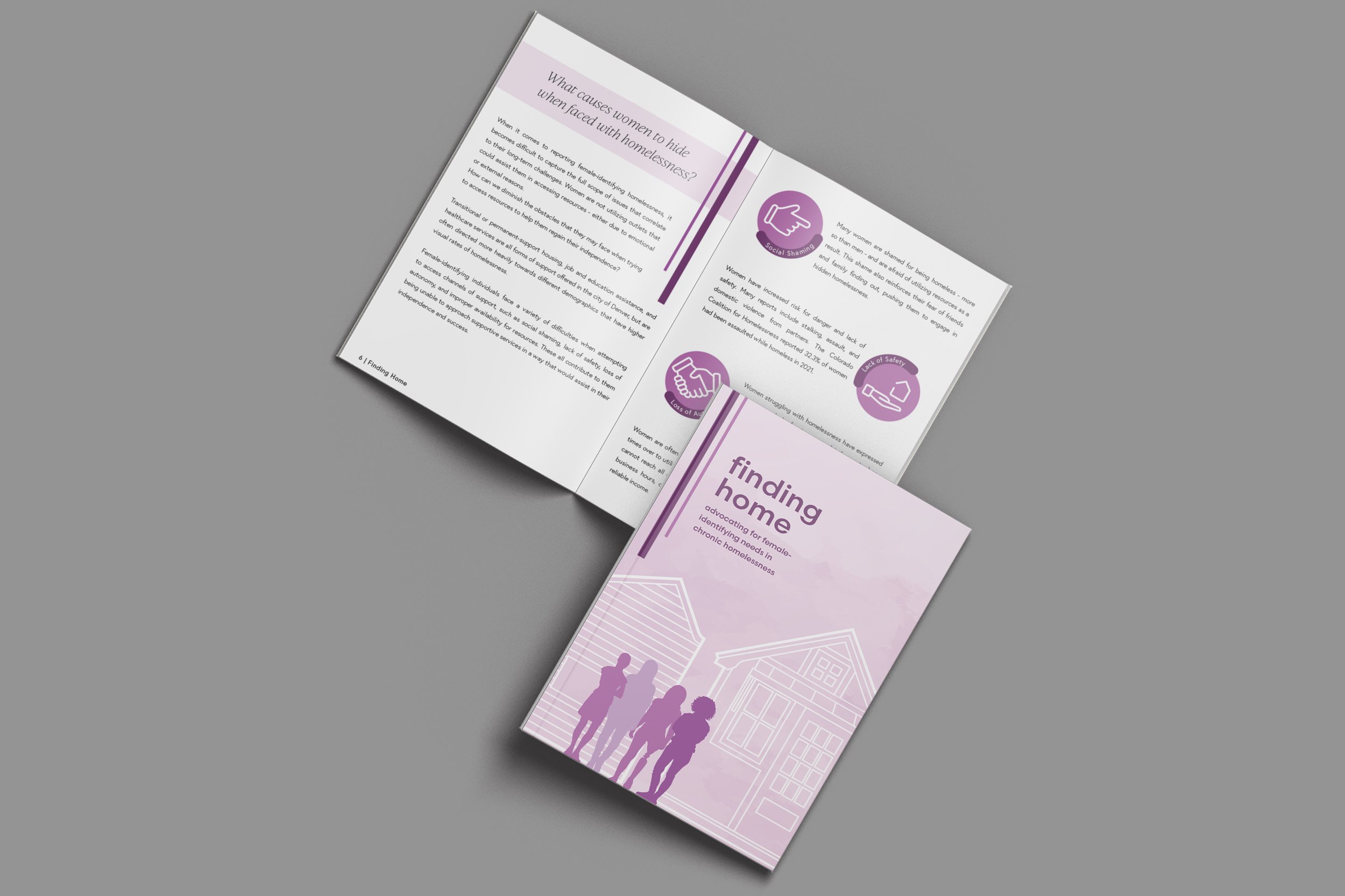
Katlyn Pollard
(she/her/ella)
Finding Home
In Colorado during 2020, 2,834 individuals were classified as victims of chronic homelessness by the National Alliance to End Homelessness – meaning individuals are homeless for longer than a year or are repeatedly put into a situation where they become homeless for an extended period, equaling up to three years in length.1Finding Home is a communication design thesis analyzing support and capacity for current outreach programs in the Denver Metro area geared towards female-identifying individuals experiencing chronic homelessness. It advocates for more support from the government and local communities to help cater to the needs and the concerns that these individuals carry when experiencing homelessness for extended periods of time. Despite being one of the largest funded cities by the Department of Housing and Urban Development for homeless reform, Denver continues to struggle and create consistent outlets of support for the individuals who experience homelessness, and as a result are putting individuals in more danger over time.
As someone who has experienced housing instability, displacement, and homelessness, it is important for me to share my perspective and research with the community I have grown up in to understand the dangers and stressors that come with sheltered and unsheltered living. With this thesis, I bring awareness to the situation and offer solutions for programs who need more consistent forms of funding and aid. I provide informed advocacy for female-identifying individuals who are repeatedly put into this situation, yet are severely underrepresented in the statistics that are meant to help garner support each year.
This installation consists of several elements. The booklet educates readers on current statistics and resources in Denver – as well as the limitations of those resources – and shows where those outlets are located to aid those who might need the information in the future, or who can pass the information along to someone who needs that information now. The video offers an analysis on successful programs and transitional housing that allows individuals the independence and support they need to get back on their feet and improve their well-being. It provides an explanation to showcase the full power of consistent funding and community support, inspiring viewers to take action, assisting homeless shelters so they may provide consistent long-term care that female-identifying individuals need. Ribbons symbolize three different pillars of housing disruption and engage viewers in a visual representation of how common these are in Denver, sparking conversation and acknowledging the core problem beyond the gallery space.
1 United States, Census Bureau. “SOH: State and Coc Dashboards.” National Alliance to End Homelessness. US Department of Housing & Urban Development, US Census Bureau, July 27, 2021. https://endhomelessness.org/homelessness-in-america/homelessness-statistics/state-of-homelessness-dashboards/?State=Colorado.
2 “HUD Announces $2.6 Billion in Awards to Help People Experiencing Homelessness.” HUD.gov / U.S. Department of Housing and Urban Development (HUD), March 14, 2022. https://www.hud.gov/press/press_releases_media_advisories/HUD_No_22_040.


Contact me.
katlynpollard.com
Instagram @katlyn.pollard2
